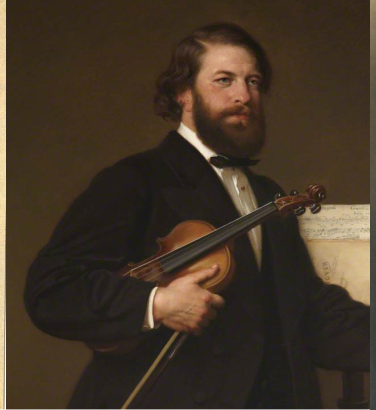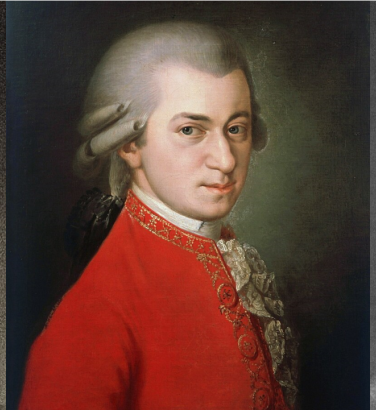
Figaro beyond Mozart (and Rossini)
18 Dec 2023
News Story
Mention the name Figaro and all sorts of associations come to mind: Mozart’s opera, certainly, along with its fast-paced repetitions in the best-known aria from The Barber of Seville – not Carmen, whatever Del Boy may tell you – and even Geppetto’s cat in Disney’s Pinocchio. Cross the English Channel, however, and the name's cultural significance increases vastly, not least of the character's association with the French Revolution. (Remember that event, we will come back to it.)
A few words about the creator of Figaro first, the wonderfully-named Pierre-Augustin Caron de Beaumarchais. One of those 18th century figures who led a remarkably colourful life, he was by turns watchmaker, businessman, harp tutor to the French royal family, spy and arms dealer before turning his attention to writing for the theatre. His literary ambitions resulted in the so-called Figaro plays: the satirical Barber of Seville (1775), The Marriage of Figaro (a 1784 comedy with strong political undertones) and what we might now call a dramedy, 1792’s Guilty Mother. The first two were wildly successful, leading to their swift adaptation as operas, but the final part of the trilogy, slower to take off, had to wait over a century and a half for this to happen.
Although Rossini’s opera is the most familiar operatic version of The Barber, it is a much later work of 1816, and had been preceded in 1782 by Giovanni Paisiello’s opera of the same name. Written for performance at the court of Catherine the Great, the latter is still occasionally revived, but it never really recovered from the success of Rossini’s sparkling comedy, despite supporters of the elderly Paisiello attempting to disrupt its premiere.
If Rossini ruffled feathers with his Barber, this was nothing compared to Mozart’s gall in wishing to write an operatic Marriage of Figaro in the first place. In the play, Figaro rails against his master Count Almaviva’s being his social superior merely by the circumstances of his birth, an injustice later seized upon by French Revolutionary leaders as having fomented the unrest which eventually led to the fall of the French monarchy. (Considering Marie Antoinette was the sister of the Austrian Emperor Joseph II, the Austrian state had understandably banned performances of this dangerously subversive work.) Peter Shaffer’s Amadeus shows Mozart having to convince the Emperor that his opera will be a very human comedy (as indeed it is), but in the circumstances, it is not unreasonable to imagine the composer was exploiting a significant loophole.
Because you are a great Lord, you consider yourself a great genius! Nobility, fortune, rank, palaces, all that makes you so proud! What did you do to deserve so many possessions? You put yourself to the trouble of being born, nothing more.
Less contentiously – though perhaps surprisingly, given the popularity of Mozart’s opera – another operatic take on The Marriage of Figaro saw the light of day in 1799. This was by Marcos Portugal, a Portuguese composer now best remembered for his religious works. To say his version of Figaro, one of the 21 operas he wrote while living in Italy in the 1790s, is revived infrequently would be an overstatement: its British premiere only came in 2010, so it remains very little known.
In writing The Guilty Mother, the third (and final) part to Figaro’s story, Beaumarchais appears to have been responding to unauthorised sequels to the earlier plays, including The Marriage of Chérubin and The Marriage of Fanchette (Barbarina in Mozart’s opera). The mother of the title is the beleaguered Countess, who, in the 20 years since the previous play, has given birth to an illegitimate son fathered by Chérubin shortly before the latter allowed himself to be killed in battle. With a plot that owes an acknowledged debt to Molière’s Tartuffe, the play has never had a secure foothold in the repertoire, which may account in part for the repeated (and not always successful) attempts to make an opera of it. Darius Milhaud and Inger Wikström took on the challenge in 1966 and 1990 respectively, as did Thierry Pécou in 2010, but perhaps the most interesting version came with John Corigliano’s 1991 The Ghosts of Versailles. This much freer interpretation – in which The Guilty Mother is performed as an opera-within-an-opera – premiered at the Met with a cast including Renée Fleming, a noted Countess in Mozart’s opera, continuing that character’s story.
So much for the Figaro operas proper. Just as Beaumarchais’ originals spawned several unofficial follow-ups, so the popularity of the operas – Mozart’s above all – has encouraged other composers to imagine what happened next. Elena Langer’s Figaro Gets a Divorce (the Suite from which was performed by the SCO in our 50th Birthday concerts in January 2024) is inspired by Ödön von Horváth’s 1937 eponymous play as well as The Guilty Mother, recasting a now older Cherubino in a darker light. This character, unquestionably the most popular of The Marriage of Figaro’s secondary cast, is also the focus of Massenet’s frothier Chérubin, in which the page – still a trouser role at the grand old age of 17 – continues to be embroiled in romantic shenanigans. These ones involve four women, among them, perhaps inevitably … the Countess.
Straight adaptations or not, one thing is clear: the popularity of the Figaro plays with composers is testament to their quality as pieces of theatre. Peopled by such vivid characters, is it any wonder so many should want to emulate Mozart and Rossini and try their own hand at a Figaro opera?
Related Stories
![A violinist shown at three different ages: as a young man in a drawing, middle-aged in a painting and elderly in an old photo]()
Joseph Joachim and the great German violin concertos
7 April 2025
Beethoven, Mendelssohn, Bruch and Brahms: four violin concertos, all connected by a single violinist.![Three men, the first two in 18th century formal dress (one in black and white, one in a red coat), the last in an old photo, smoking]()
What is a sinfonia concertante?
17 March 2025
We delve into the history of a hybrid genre ...![]()
The SCO Chorus on music for Lent
10 March 2025
With Easter just around the corner, we delve into perhaps the richest (and often darkest) choral repertoire of all ...


